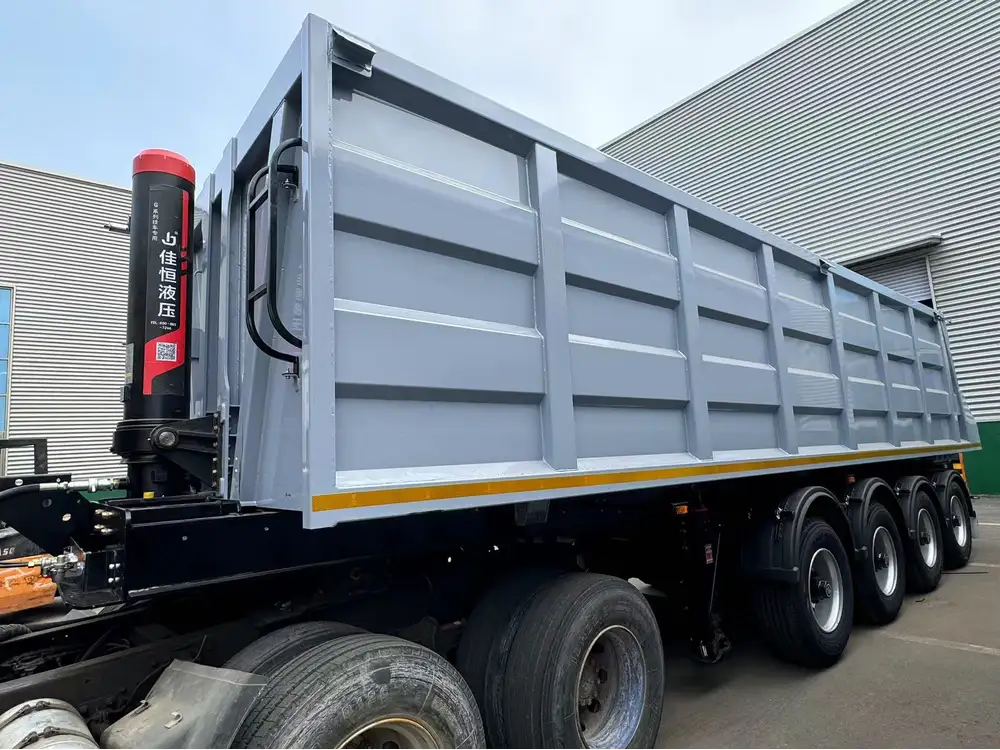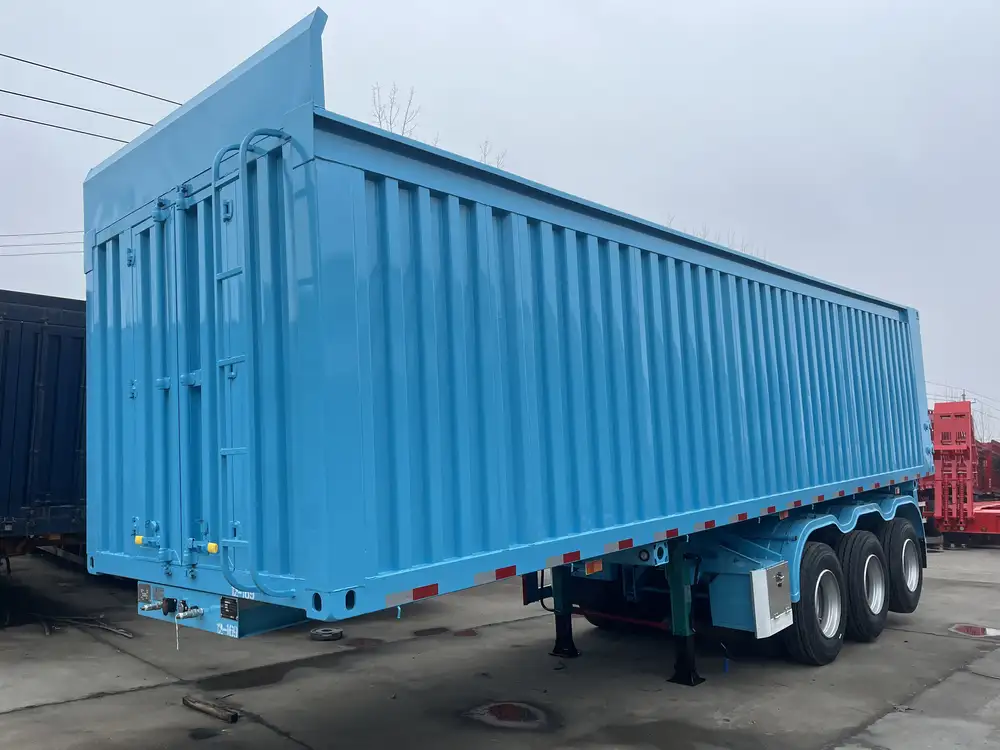In the expansive world of logistics and trucking, understanding the dimensions of vehicles that transport goods is crucial. One frequently asked question is, “How long is an 18 wheeler trailer?” The answer is multifaceted and addresses various operational, regulatory, and practical aspects of semi-trailers.
The Standard Length of an 18 Wheeler Trailer
Generally, an 18-wheeler consists of a tractor unit and a semi-trailer. The most common configurations include:
| Trailer Type | Typical Length | Common Use Case |
|---|---|---|
| Standard Flatbed | 48 feet | Transportation of heavy equipment and materials. |
| Standard Dry Van | 53 feet | Shipping of general freight and boxed goods. |
| Reefer Trailer | 53 feet | Transporting temperature-sensitive goods. |
| Lowboy Trailer | 48-53 feet | Hauling oversized loads and equipment. |
The 53-feet dry van trailer has become a standard in the industry due to its efficiency in maximizing cargo space while adhering to federal regulations for interstate transport.
Regulations Impacting Trailer Lengths
Understanding trailer lengths goes beyond mere measurements; it encompasses a web of federal and state regulations. The length regulations often vary based on the type of cargo transported and the geographic location of operation.

Federal Regulations
The Federal Highway Administration (FHWA) regulates the maximum legal dimensions for commercial motor vehicles in the United States. Here are the key points:
- Overall Length: An entire combination vehicle (tractor plus trailer) cannot exceed 65 feet on most highways and up to 75 feet on some specific interstate routes.
- Trailer Length: Individual semi-trailers are generally limited to 53 feet in length, while combinations can vary significantly based on configurations and state policies.
State Regulations
Go beyond federal guidelines, and dive into the specific laws of individual states. Different states can have unique restrictions that can affect the usable trailer length:
- California: Allows up to 53 feet for semitrailers.
- Texas: Permits combinations up to 75 feet.
- New York: Also has a maximum limit of 65 feet for combination vehicles.
Understanding the jurisdictional differences in trailer lengths is critical for manufacturers, owners, and operators to ensure compliance and prevent costly fines.
Key Considerations for Buyers of 18 Wheeler Trailers

Weight Limits and Length Conversions
When debating how long an 18-wheeler trailer can be, it’s essential to consider weight limitations. Commercial trucks have a federal weight limit of 80,000 pounds Gross Vehicle Weight (GVW). The length of the trailer affects how cargo weight is distributed and determined.
To illustrate:
- 53 feet trailer without a load: Can comfortably bear a heavier cargo weight.
- 48 feet trailer carrying similar loads: Requires more frequent load shifts and checks to ensure compliance.
Maneuverability and Accessibility
Another significant aspect tied to the length of an 18-wheeler trailer is how it affects maneuverability. Longer trailers can be a challenge in tight urban environments. Businesses considering purchasing or leasing these trailers should assess:
- Loading Docks: Longer trailers need more clearance for backing and navigating into dock spaces.
- Urban Areas: Shorter trailers may be optimal in cities with dense traffic and narrow roads.
Cost-Effectiveness
Longer trailers often offer more loading space, which can be beneficial for bulk or heavy materials. However, a thoughtful analysis must also consider:
- Fuel Efficiency: Longer trailers tend to consume more fuel over distance.
- Maintenance Costs: Larger trailers may incur higher upkeep due to additional wear and tear on parts.

Versatility of Different Trailer Types
Choosing the right trailer length also involves understanding the specific needs for different types of cargo. Semi-trailer types are versatile; hence, manufacturers produce various configurations suited for specific applications.
| Trailer Type | Ideal Cargo | Benefits |
|---|---|---|
| Flatbed | Construction materials, machinery | Quick loading/unloading; no sides for easy access. |
| Dry Van | Consumer goods, electronics | Protection from elements; secure storage. |
| Reefer | Perishable goods | Temperature control during transport. |
| Lowboy | Heavy equipment, vehicles | Lower deck height for easier loading. |
Each type has its common lengths but also variable configurations, thus enhancing the logistics capability of various companies or industries.
Understanding Trailer Compatibility
Before purchasing a semi-trailer, owners should consider whether the trailer is compatible with their specific truck chassis.
Common Chassis Compatibility
- Standard Tractors: Compatible with a variety of standard-length trailers, including the most common 48 feet and 53 feet models.
- Specialized Tractors: May have unique hitching systems designed for longer trailers like lowboys or extendable flatbeds.

Lifespan and Durability
The trailer’s length can also impact its lifespan and durability. Longer trailers that are often loaded improperly can wear out more quickly, leading to increased maintenance costs. Understanding build materials also plays a crucial role:
- Aluminum Trailers: Lighter weight with good durability; less likely to rust.
- Steel Trailers: Offer strength but tend to be heavier and more prone to rust and corrosion if not properly maintained.
Addressing Common Queries about 18 Wheeler Trailer Lengths
1. Are all truck trailers the same length?
No, there are various truck trailers differing in length and designed for specific loads. 18-wheeler trailers can range from 28 feet for specific operations, like pup trailers, to the standard 53 feet most commonly used.

2. What determines the legal length of an 18-wheeler trailer?
Legal lengths are determined by a combination of federal regulations, state laws, and operational considerations, including road types and types of cargo being transported.
3. Can you extend a trailer beyond its standard length?
Certain trailers, known as extendable trailers, can adjust their lengths for various loads. However, regulations still apply, and operators must ensure they comply with the maximum allowed trailer length in their jurisdiction.
4. How to measure the length of a trailer accurately?
The length should be measured from the front of the trailer’s hitch to the rear. Accurate measurements ensure compliance with regulations and logistical planning.

Conclusion
In conclusion, determining how long an 18-wheeler trailer can be incorporates a myriad of factors: federal and state regulations, type of cargo, maneuverability, economic implications, and compatibility with truck chassis. As a manufacturer of semi-trailers, understanding these dimensions and specifications is paramount for ensuring that our products meet the varied needs of users. By making informed decisions on trailer lengths, one can optimize functional efficiency while guaranteeing compliance across various jurisdictions. Investing in the right trailer not only enhances transport capabilities but also ensures the safety and reliability of the logistics chain.



